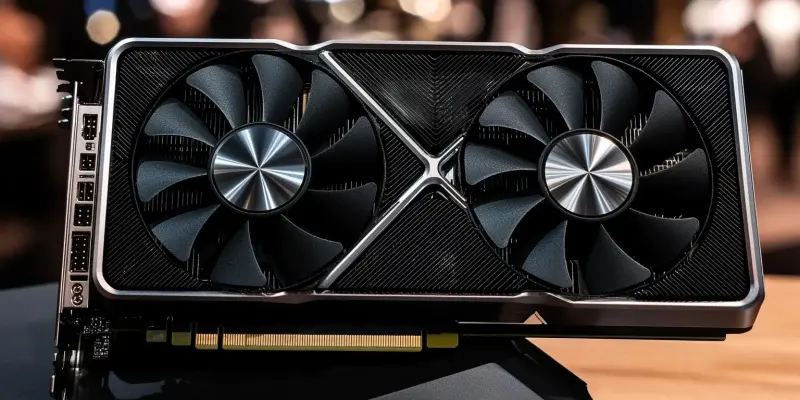Nvidia took the stage at CES 2025 with a groundbreaking announcement that has set the technology and gaming world abuzz. The unveiling of their flagship RTX 5090 GPU has introduced astonishing capabilities, particularly showcased in the popular esports shooter, Valorant. This GPU has managed to achieve over 800 frames per second (fps) with an exceptionally low input lag of under 3 milliseconds by leveraging Nvidia’s newly revealed Reflex 2 technology.
Introduction of Reflex 2 Technology
Reflex 2 is the next iteration of Nvidia’s original Reflex technology, which focuses on reducing input lag for gamers. This upgraded version promises up to a 75% reduction in latency, a significant improvement over the 50% reduction achieved by its predecessor. Key to Reflex 2’s enhancement is a new feature called ‘frame warp,’ designed to optimize low latency mode further. By incorporating this innovative technology, Nvidia is significantly enhancing gaming performance for both casual and professional players.
Impact on Esports Performance
The importance of such high frame rates in Valorant goes beyond mere numbers on a screen. For professional esports players, the demand for the highest processing power and minimal input delay is critical. While an 800 fps benchmark might seem superfluous for many average gamers, it becomes a holy grail for professional players. The RTX 5090, combined with Reflex 2 technology, sets a new standard for gaming expectations by ensuring that players can achieve maximum performance with minimal input lag.
Performance Dynamics in Valorant
Over time, performance dynamics in Valorant have shown frame rates exceeding 1,000 fps in certain scenarios. However, a subsequent game update has made it more challenging to reach these peaks. Despite these changes, the RTX 5090’s ability to drive Valorant at over 800 fps underscores the revolutionary power of Nvidia’s latest GPU. This capability not only highlights the potential of new hardware but also reflects the ongoing evolution and optimization within the game itself.
Beyond Current Hardware Capabilities
Practically, achieving such high frame rates surpasses the refresh rates of even the most advanced monitors available today. CES 2025 also saw the introduction of a forthcoming 750Hz monitor, yet the RTX 5090’s performance still exceeds these specifications. For most gamers, these capabilities might seem excessive; however, it confirms Nvidia’s commitment to pushing technological boundaries. This continuous innovation ensures that as display technology advances, Nvidia’s hardware will remain at the forefront, ready to meet new demands.
Conclusion
Nvidia took the spotlight at CES 2025 with a groundbreaking announcement, sending waves through the tech and gaming industries. Revealing their premier RTX 5090 GPU, Nvidia has set a new benchmark in graphics performance. This top-of-the-line GPU brings shocking advancements, demonstrated effectively with the highly popular esports shooter, Valorant. The RTX 5090 achieves an astounding over 800 frames per second (fps), a feat that captivates both gamers and tech enthusiasts.
What makes this accomplishment even more impressive is the exceptionally low input lag, clocking in at under 3 milliseconds. This remarkable performance is made possible by Nvidia’s newly introduced Reflex 2 technology, which significantly enhances reaction times and boosts gamers’ competitive edge. Reflex 2 is poised to change the landscape of gaming, providing a smoother, more responsive experience.
The RTX 5090 isn’t just about gaming; it promises to revolutionize other areas like virtual reality and AI applications. As a result, Nvidia’s latest offering is not only raising the bar for gaming but possibly for the entire tech ecosystem.

